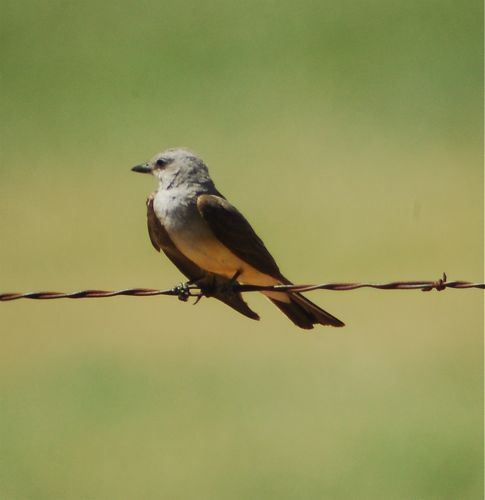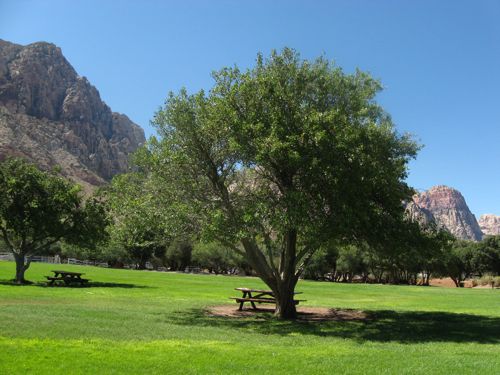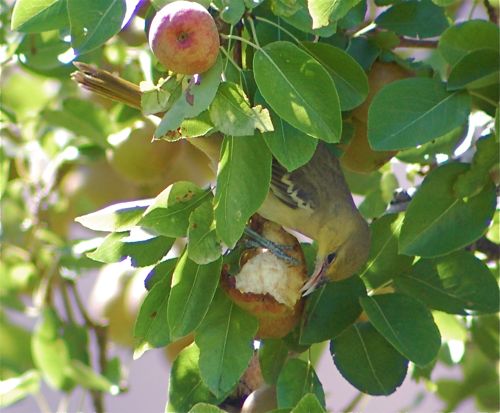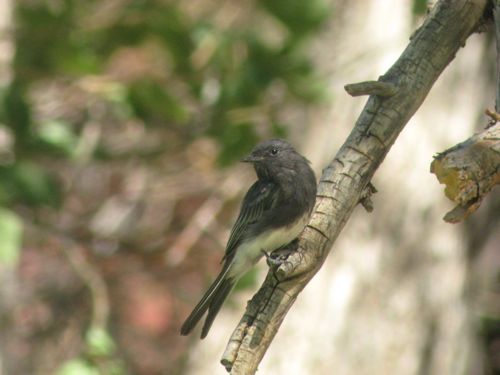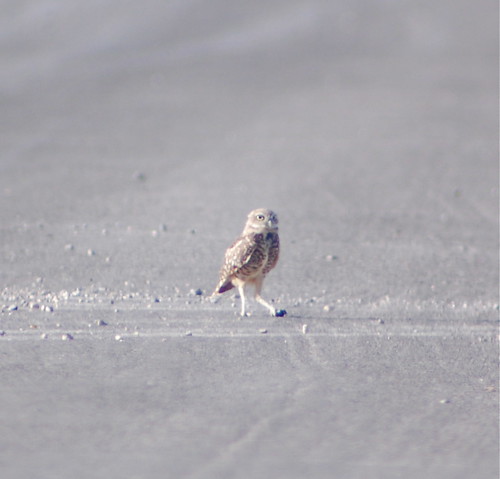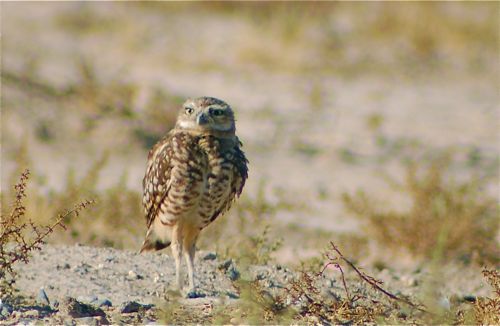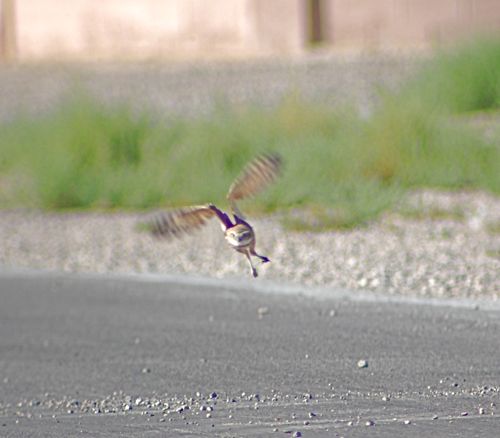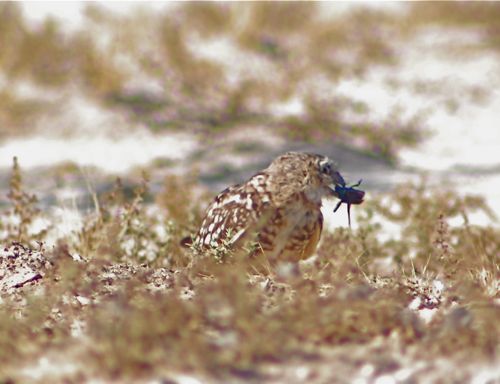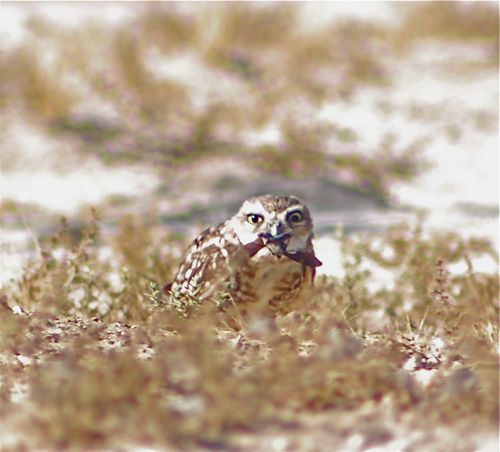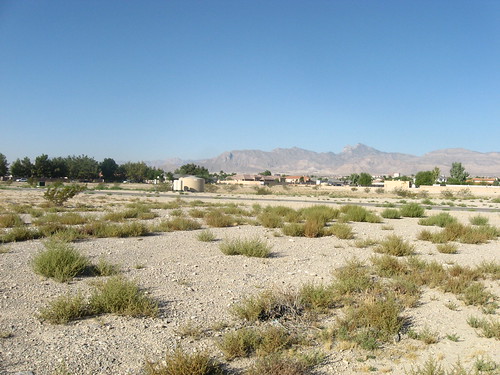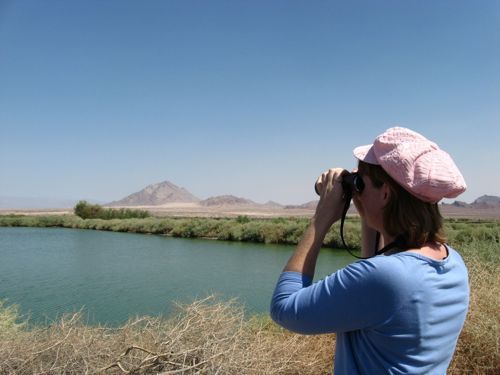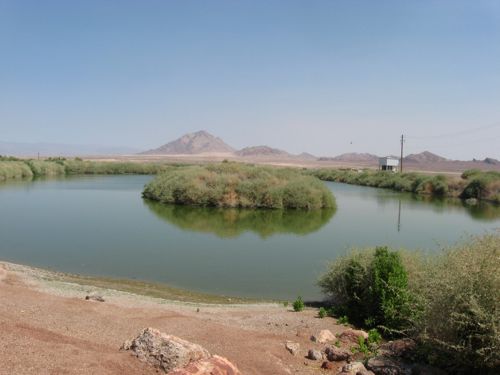A sample of waterfowl at Point Douglas right now.
Birding Sax Zim Bog
I really hate car shopping. When we had to go through the process a few weeks ago, I heard through the MN birding grapevine that several northern hawk owls were reported in northern Minnesota, I decided a day up to Sax Zim Bog with my good friend Amber would be my reward. Besides, what better way to get to know our Kia Pet (the named dubbed to our very beige vehicle because it looks like a Chia Pet before the grass grows out) than by taking it on an all day birding trip?
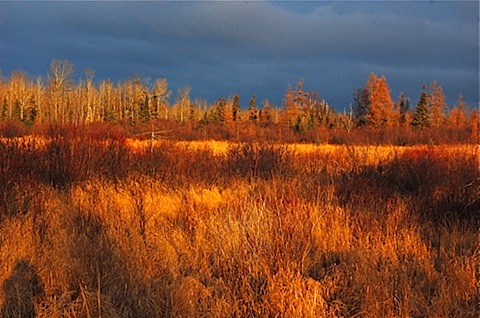
Since daylight is short, Amber and I left the Twin Cities early to arrive at Sax Zim Bog just after sunrise and get some great photography light. Our plan seemed to work. The light was great when we arrived, and dark clouds in the distance only enhanced the bog's colorful landscape.
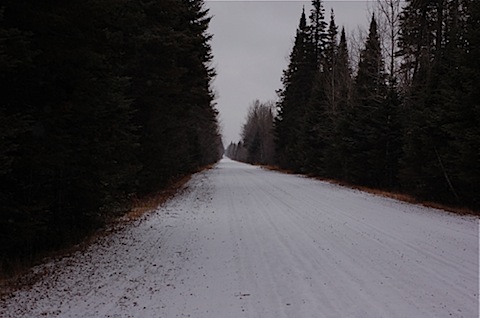
Alas, the sun was a total tease and soon hid behind clouds that brought light snow. On the upside, I got to really test out the Kia Pet's brakes and refamiliarize myself with driving on snow and a few patches of black ice. Whoopee, I stayed out of the ditches. I do laugh, we've had this vehicle for a couple weeks now and I still drive it like our old sensitive Saturn, like pausing before I press the gas to go in reverse. You had to give the Saturn a minute to think about it or she wouldn't reverse or would jerk violently into it. I forget with this car, I reverse without pause. Ah, the joy of driving a reliable car! But back to birding the bog...
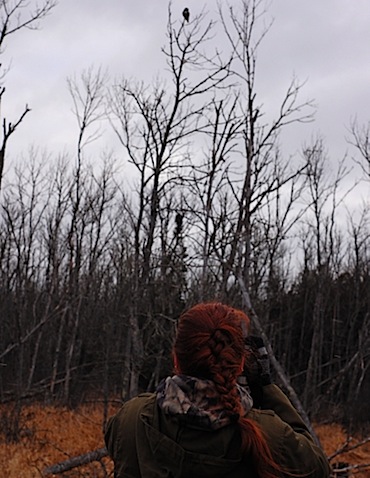
We got a northern hawk owl right away near the corner of 7 & 133 near Meadowlands. If you are interested, there's a google map of where northern hawk owls have been reported which members of the Minnesota Ornithologists' Union add sightings to help those who visit the bog. There appears to be a small irruption of hawk owls this year (perhaps a crash in the vole population on their breeding grounds, pushing quite a few owls south into Minnesota). It's not on the scale of the owl irruption of 2004/2005 but we will never see the likes of that again...or at least not in our lifetime.
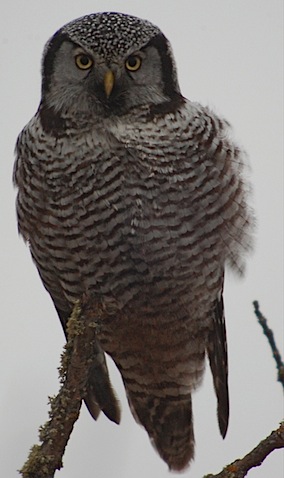
This bird put on quite a show for us, as it was actively hunting. It dove down into the grasses, we could see it scurry though and then fly back up. This spot is right next to some railroad tracks and is a road that's used quite a bit in the bog. I'm always fascinated by an owl's ability to hear any prey in a spot like that. I must say, I'm loving the Nikon D40 for digiscoping. This photo turned out way better than it should have considering how low the light conditions were. In the past I've used point and shoot cameras for digiscoping with my Swarovski scope and I would have gotten blogable photo, but nothing this clear on a cloudy day. We ended up seeing a second northern hawk owl as we meandered around the bog, but it was much further away from the road and flew off to parts unknown. I couldn't believe we got our target bird so early.
But the blog is not just about owls, there are so many great birds to find this time of year!
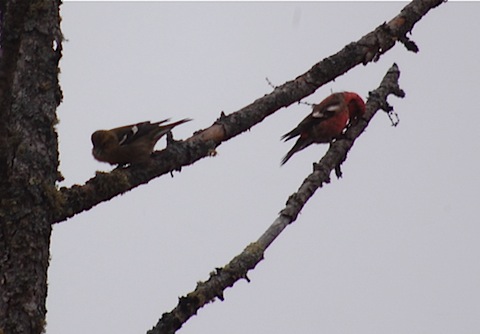
We used the MOU's Sax Zim Bog site maps (particularly the Birding Roads tab) and went looking for birds. Any time we saw a flock of birds land nearby, we pulled over to investigate. We found a small flock of white-winged crossbills working their way through.
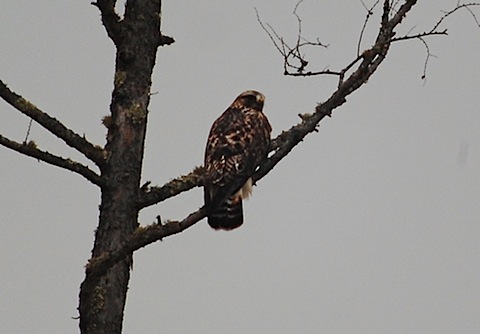
We also saw about a dozen rough-legged hawks--each one different (we even saw a couple of dark morph birds). We saw many bald eagles as well but we did note that we did not see any red-tailed hawks, interesting change of buteos. The rough legs are very cagey and hard to get photos of. No matter how far away you park, as soon as the scope is trained on them, they poop (a sure sign they are about to fly)...
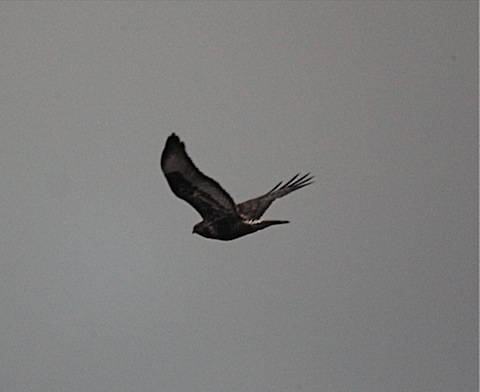
This is a different bird than the one perched above--very dark, almost a dark morph. It's cool to see them in so many different color variations. One of the things I love about living in Minnesota is that a day's drive at the right time of year can give you a completely different set of birds. In the Twin Cities, we're loaded with red-tailed hawks. A two and half hour drive north and we're surrounded by rough-legged hawks. Awesome to have a change of pace.
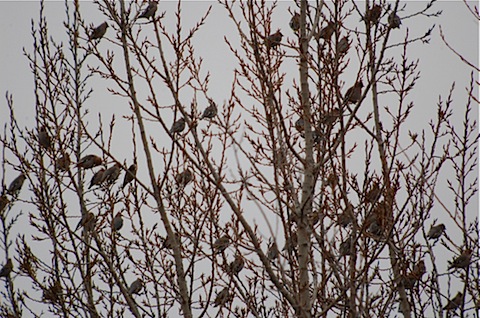
Speaking of a change of pace, Amber and I started following another large flock of birds. When they landed, I rolled down the car windows and was excited to hear the louder and deeper trills of bohemian waxwings.
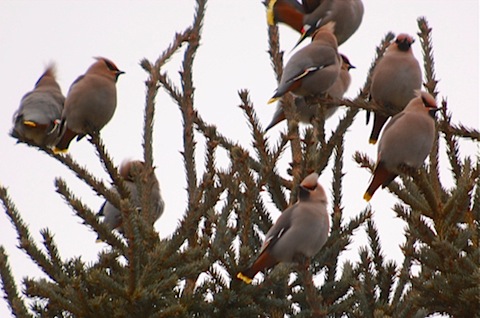
Here's a closer photo of them. Can you spot the differences between these and a cedar waxwing? If you follow this link, you'll see photos of cedars--they have white butts. The above bohemians have rusty butts. Bohemians also have a red and white patch on their wings. So, cool--a different type of waxwing too! I tried to get a video so you could hear the difference in their calls, but the wind blocks it a bit:
At Xeno Canto, you can also here the difference. This is the sound of cedar waxwings and then this is the bohemian waxwings.
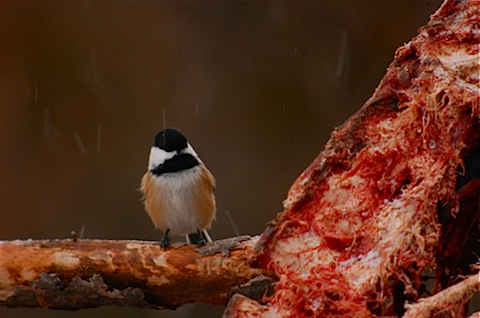
We drove down Admiral Road where a deer carcass is usually hung. In the past this has been a great spot for all sorts of birds. Amber and I found that a deer carcass was already up. Black-capped chickadees and down woodpeckers snuck it for bits of fat and meat.
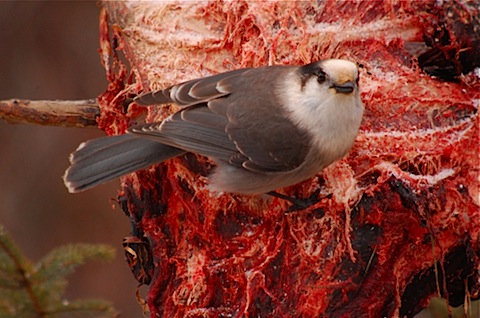
As did about five gray jays (who kind of look like a balding chickadee on steroids). I showed this video to Non Birding Bill and he said it reminded him of Hannibal Lecter which led to this photo caption. There ended up being about five gray jays who came in for the food source. It was interesting to watch the difference in these jays, the crept in quietly like the snow for the food. I'm so used to blue jays--or even green jays or Steller's jays who noisily announce their presence before coming into a feeding station. These birds swooped in secretively, very unjay-like.
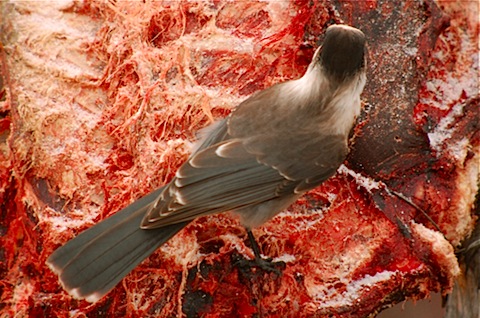
I loved the contrast of the ragged, bloody cage compared to the soft feathery gray of the jay. I took a ton of photos, but the wind picked up at this point and my eyes were watering, I could barely focus my scope.
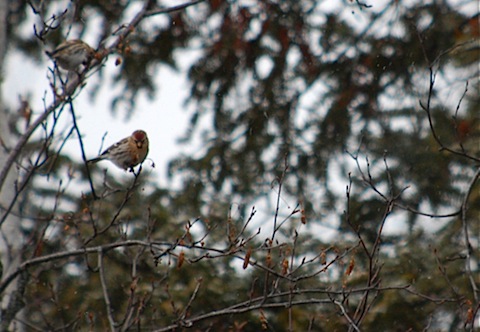
We also came across several flocks of common redpolls feeding on birch seeds. It was great to see them eating on a natural food source and not a feeder (not that I won't take them at a feeder, but I read they eat birch seeds, I enjoy seeing a bird doing what a researcher tells me they do). We've already had pine siskins show up at Mr. Neil's. I wonder if we'll get redpolls too?
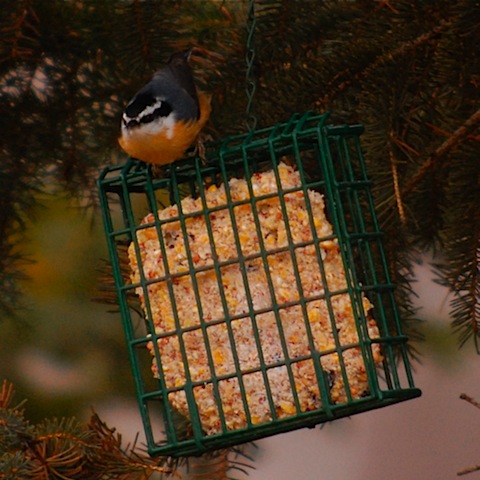 We also stopped at one of the feeding stations open for public viewing at the bog (which was innundated with red-breasted nuthatches). One of the residents has been kind enough to put bird feeders at the end of their driveway and you can park across the street and stand at the end of the driveway and enjoy the birds. In the past, this has been chock full of birds. She came out to greet us and said they had just put the feeders up so the birds were just discovering it. There's normally a little box requesting donations for bird food, she hadn't even had time to put that out yet (so we put a few bucks in her mailbox as a thank you).
All in all it was a GREAT day. We didn't see every bird possible--no boreal chickadee or great gray owl so Amber and I decided that we're going to have to take another day and bird the crap out of the bog.
We also stopped at one of the feeding stations open for public viewing at the bog (which was innundated with red-breasted nuthatches). One of the residents has been kind enough to put bird feeders at the end of their driveway and you can park across the street and stand at the end of the driveway and enjoy the birds. In the past, this has been chock full of birds. She came out to greet us and said they had just put the feeders up so the birds were just discovering it. There's normally a little box requesting donations for bird food, she hadn't even had time to put that out yet (so we put a few bucks in her mailbox as a thank you).
All in all it was a GREAT day. We didn't see every bird possible--no boreal chickadee or great gray owl so Amber and I decided that we're going to have to take another day and bird the crap out of the bog.
It's Dark-eyed Junco Time
After we did some work at the beehives I took a few moments to get some photos at the bird feeders. I scattered a little bit of millet since I've seen juncos flitting around on the Twin Cities bike trails and along the country roads near Mr. Neil's. Sure enough, a junco hopped on the stump with the millet...as did a hairy woodpecker. The suet feeders were full and I even put some old mixed nuts out and still this woodpecker went to explore the millet pile. There were some black oil sunflowers mixed in with this, so I'm sure that's what the hairy was after. It was fun to watch the two species interact. The hairy doesn't appear to care about the junco. The junco doesn't mind the hairy, but does keep a close watch on the larger bird and seems to make sure that the woodpecker does not violate his personal space. [youtube]http://www.youtube.com/watch?v=yYXhW2WN1EI[/youtube]
I love the nuthatch that sneaks in at the end.
Mesh Tube Bird Feeding Video & Links
There are some way cool links out there. One is over at Round Robin Blog and it's all about an Albatross Cam! It is so cool. One of the photos from the albrotross backpack cam shows them feeding along with killer whales--how cool is that? Sigh, I would love to hang out at an albatross colony for a day. I may never see one, but I love knowing they are out there. Another fun link is about a satellite transmitter on a whimbrel and another is a person's photos of a great horned owl rescue. The owl is apparently doing fine, but the photos are awesome, especially just the one eye staring at the photographer from the box. Sinister box indeed.
Bill and I also completed another video for OpenSky about one of the mesh feeders I really like. You may recognize it from some of the photos in the blog over the years. Why even Mr. Neil has taken photos of birds on it.
[youtube]http://www.youtube.com/watch?v=I7ozd6dQiwQ[/youtube]
If you like the feeder, you can get it here.
Woodpeckers, Suet and Suet Sandwich Feeder
I mentioned earlier that I'm partnering with OpenSky. It's an online store with birding products that I like. Part of my end of the deal is to make blog entries and videos of the product I like. Non Birding Bill and I see this as an opportunity to create some short fun birding videos. Below is one on woodpeckers and suet filmed in Mr. Neil's backyard. It's about four minutes long, safe for work and has a great photo of a woodpecker tongue. [youtube]http://www.youtube.com/watch?v=KJMZf472jmo[/youtube]
If you are interested in this feeder, you can purchase it here. It really does work well to keep raccoons out and I've had great success chaining to to tree branches (with a lock) to keep raccoons from running off with the feeder and it's fatty booty in the middle of the night.
Holy Crap, Heron vs Big Ass Fish
Zeiss rep Steven Ingraham posted this video he got with his scope and video camera combo of a great blue heron working a great big fish: [youtube]http://www.youtube.com/watch?v=_m4PWn8yFO8[/youtube]
Roadrunner vs Cowbird At Spring Mountain Ranch State Park
 I need to get back to Spring Mountain Ranch State Park in Nevada. I blogged earlier that I given the advice by the Red Rock Audubon Society to visit here, since there would be different species than we would see in and around Las Vegas. We saw some great birds and I got a life bird, but I also saw one of the coolest birding interactions I have ever seen.
I need to get back to Spring Mountain Ranch State Park in Nevada. I blogged earlier that I given the advice by the Red Rock Audubon Society to visit here, since there would be different species than we would see in and around Las Vegas. We saw some great birds and I got a life bird, but I also saw one of the coolest birding interactions I have ever seen.
It started when we reached the actual ranch part of the park. That's Clay and Non Birding Bill setting up their cameras. Clay spotted a predator in the grass:
Can you see it? Believe it or not, there is a greater roadrunner lurking in that grass. Clay gets them in his backyard in Corpus Christi. Roadrunners are incredible predators that will eat snakes, reptiles and even birds. In Clay's yard, the roadrunner stalks house sparrows. He recognized this bird as being on the hunt right away. Most of my experiences with roadrunners has been watching them scurry along a road, so to watch it in full on skulk mode for the hunt was incredible.
The roadrunner would crouch down in the tall grass and slink along with just the top of its head visible. Almost like a feathered shark fin breaking the top of an ocean. Periodically, it was stop for an insect and gulp it down while using the grass for cover. What was this bird stalking for a meal?
A flock of unsuspecting cowbirds. They were following the cow and the horses in the field. The area was recently grazed and the grass was short for the cowbirds to feed, but nearby the taller grass hid a predator actively stalking them. Clay, Bill and I all staked out a position to get photos of whatever was about to happen.
One lone cowbird made the fatal error of straying away from the safety of the flock. I tried to line this shot up so that the cowbird was in front of the roadrunner, but the roadrunner had crouched so low, you couldn't see it. Suddenly, the cowbirds took flight, some went right over the roadrunner. The predator leaped into the air, grabbed a cowbird with it's beak, whacked it a few times against the ground, and took off running. NBB actually got footage of that, which you will see when we get the videos edited together.
I got a shot of the roadrunner crossing the road in front of us with the dead cowbird in its mouth. I previewed this photo on Twitter with the question, "Guess what's in the roadrunner's mouth?" A few were insistent that it was a house sparrow, but this is a young cowbird--note the size in relation to the roadrunner, the white throat patch, the thick dark bill, and the vertical streaks on the breast (young cowbirds have vertical streaks). House sparrows and brown-headed cowbirds are unpopular birds. House sparrows are an introduced species that can wreak havoc on nesting bluebirds, chickadees and nuthatches. Brown-headed cowbirds are natives, but their nesting habit of laying their eggs in other birds nests has caused problems for species like Kirtland's warblers. Many people don't mind a roadrunner eating those particular species. But like any successful predator, roadrunners are generalists. They don't go for just he unpopular birds, many in the western US are chagrined to find roadrunners stalking their hummingbirds feeders.
As we worked our way around the trails, we made it to Lake Harriet, which was an oasis of color. Above is WildBird on the Fly scanning the water for ducks. It was quiet apart from some young coots incessantly clucking. I think this would be packed on a weekend, but on a week day this was a spot where you could imagine being the only person for miles.
It was weird having NBB along on this trip (my birding and non birding world was colliding, my compartments were getting mixed up). I sat at this spot and leaned against NBB for a moment. I'm so used to seeing a beautiful vista and wishing he were next to me or wondering what he'd be doing while I'm and about, it was a treat to have him there to see this with me. My filmmaker husband did surprisingly well on this trip. I must admit that I was nervous with how we would handle being around my birding friends for 5 days and out doing some hardcore watching and filming in the heat. But I think since he was focused on getting footage, he was able to do it. I'm so proud, he got some great footage--especially that roadrunner. Editing is going to take longer than I thought, but this video series is going to be so cool, it's about how you can watch birds anywhere and we're using a small HD camera while Clay experimented with a cheaper hand held video camera with the new Swarovksi UCA adaptor and I took video with my Cannon A570's point and shoot video feature and my scope. On the fly birding videos for the internet, I love making these.
This little lake was chock full of young coots. They don't quite look like the black adults, but when this young bird stepped out of the water, those lobed toes gave it away as a total American coot. Again, I wish we could have explored further, there's an old cemetery in the park and it would have been fun to visit that too. This park was a great suggestion from Red Rock Audubon.
We saw signs around the park that wild burros were possible and as we were packing up to leave NBB said, "Look, burros."
There they were! Wild burrows...well feral burros...oh heck, we all shouted, "Wild Asses!"
Just what we came to Vegas for!
These are feral burros, they were brought over as a beast of burden by the Spanish because they do well in arid climates. The ones that roam the west are the result of escapees or released animals from well over a century ago. They behaved pretty much the way a captive burro would behave and I'm not sure why I got so excited over seeing feral ones. What is it about seeing an unfettered ass that makes me so happy?
So, this is a very cool park and if you have some time in Vegas, check it out. You could easily spend a full day here, but we did it in half a day. It was easy to get in and get out with a rental car. If you don't have a rental car, if you contact Red Rock Audubon Society, you could probably find a guide to take you there for a reasonable fee.
I'm going to end this with some video of the cowbirds. Note how they keep their tails cocked up while they feed. I wonder if they are releasing heat from their vent area as a means to keep cool?
[youtube]http://www.youtube.com/watch?v=hiX_fIBU0js[/youtube]
Spring Mountain Ranch State Park
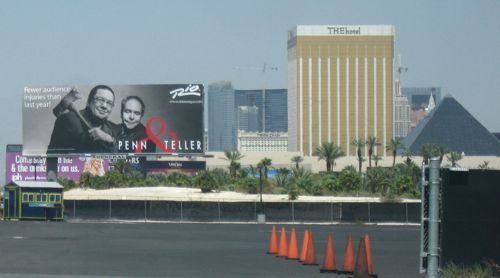 When I told people that I was going to Las Vegas on a birding project (and to visit some old friends) people thought I was a little nuts. Vegas in August? The timing may not have been ideal, but there were birds there. Most people tend to think of the casinos and great shows (by the way, we saw the Penn & Teller Show--highly recommend it, we had a GREAT time) in Vegas and my earlier posts have focused on the urban birding potential. However, in just a short drive into the mountains, you can find some fabulous natural scenery:
When I told people that I was going to Las Vegas on a birding project (and to visit some old friends) people thought I was a little nuts. Vegas in August? The timing may not have been ideal, but there were birds there. Most people tend to think of the casinos and great shows (by the way, we saw the Penn & Teller Show--highly recommend it, we had a GREAT time) in Vegas and my earlier posts have focused on the urban birding potential. However, in just a short drive into the mountains, you can find some fabulous natural scenery:
This is Spring Mountain Ranch State Park. Rita at Red Rock Audubon Society recommended this site to our group and I'm so happy we took her advice--isn't that gorgeous? Totally worth the $5 fee to get into the park. It's recommended that you visit this park on a weekday when there are fewer people, on the weekends this park gets packed with people. We were here on a Thursday and there were times when we felt like we were the only people in parts of the park. We didn't have a chance to do it all, but if I ever go back to Vegas, this park will be at the top of my list to revisit.
We were greeted by a western kingbird in the parking lot with a lone raven calling overhead. The park's cooler temperatures were instantly noticeable when we stepped out of the van. It was still hot, but this park is 3,800 feet and averages about 10 - 15 degrees cooler than Las Vegas. The drive from our hotel to this park was about 40 minutes, so if you have a rental car, it's an easy day or early morning trip. One of my favorite sparrows was in the parking lot too--lark sparrows! Such a classy looking brown bird. Here's a video:
[youtube]http://www.youtube.com/watch?v=P0XAqZKuaEQ[/youtube]
While we were in the parking lot, we could hear a TON of house finches in the distance. As we all went our separate ways to record video of birds, WildBird on the Fly, Non Birding Bill and myself headed towards the finches.
The sound came from this pear tree with branches laden with ripe fruit. The house finches were going crazy eating the pears.
Here's a female Bullock's oriole chowing down on a pear. She worked this one for a good ten minute. It was interesting to watch her wedge her bill inside the white flesh and then open her beak to cut out a morsel to swallow. Western tanagers also flew in to take advantage of the tree's bounty. We could also hear other cool birds around us including lazuli buntings (Which almost caused an argument with me and my husband, it's a nemesis bird for me, I always miss it. As a matter of fact NBB got a clear look at a male before I saw a bunting period. I did not get the best look of lazuli bunting, but I at least got a countable look).
I had WildBird on the Fly try out some of my digiscoping equipment and lo and behold, she actually got a good shot of a black phoebe at the park. This was using my Swarovski scope and DCA adaptor with a Cannon Powershot A570, not bad for a newbie.
Check out this Say's phoebe I got with my new SLR. I was experimenting with my new Nikon D40 that I got right before I left...which Non Birding Bill pointed out, "Don't you tell people in your workshops to not get their equipment right before they leave? But I figured that Vegas was not the trip of a lifetime and my beloved Fuji FinePix E900 died. The Cannon A570 is a serviceable digiscoping camera but not my favorite. The D40 worked but I did have a strong learning curve. I have to look through the view finder and not at a digital screen with the SLR. All my shot look perfect in the view finder, but had I paid attention to the shots as they showed up for a few seconds after been taken, I would have seen that they were under exposed. So, I thought I was getting 50 great shots at a time, but in reality when I downloaded them, I discovered that I got 1 or 2 for every 200 photos taken.
Again, that is advice that tell people about digiscoping. For every good photo, there are 200 utter crap ones. I think once I get my groove down, I'm going to like this camera, but I'm still trying to figure out how to carry this larger SLR camera and my binoculars.
Check out his cutey! The park was full of these tiny critters and when they ran away from you, they had tiny white tails--like a rabbit. My cute mammal centric husband enjoyed these far more than he enjoyed the birds. After checking out my Peterson Mammal book, I learned that this is an antelope squirrel, small social critters that are adept at climbing cactus. We also saw a mountain cottontail and the park brochure said that if you go into higher elevations mule deer, big horn sheep, and kit foxes are possible.
More on this park in the next entry.
Las Vegas And Urban Burrowing Owls
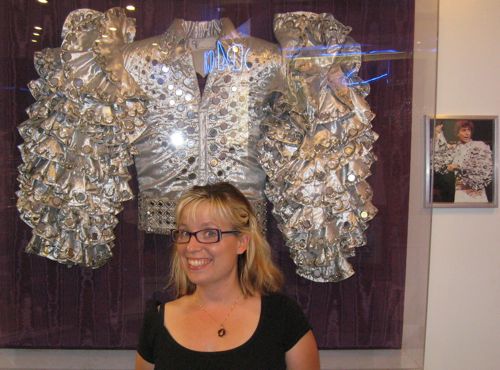 Las Vegas is a strange world that I cannot quite fathom. I get the spectacle of it, I love how just as a visitor, you yourself become a part of the overall Vegas ambiance, you become part of the background of someone else's vacation. I love that I can go into a casino and have my photo taken with parts of Barry Manilow's wardrobe (I know that looks like something Liberace would wear, but believe me, that is classic Manilow). I love that there is a store that sells nothing but Barry Manilow items--a whole store, in this economy, a whole store dedicated to Mr. Copacabana himself (a note--Donny and Marie have a case as a casino shop, but not their own store, that's how big Barry rates). I love that I can turn my phone from a mere Blackberry to a Blackbarry Manilow.
Las Vegas is a strange world that I cannot quite fathom. I get the spectacle of it, I love how just as a visitor, you yourself become a part of the overall Vegas ambiance, you become part of the background of someone else's vacation. I love that I can go into a casino and have my photo taken with parts of Barry Manilow's wardrobe (I know that looks like something Liberace would wear, but believe me, that is classic Manilow). I love that there is a store that sells nothing but Barry Manilow items--a whole store, in this economy, a whole store dedicated to Mr. Copacabana himself (a note--Donny and Marie have a case as a casino shop, but not their own store, that's how big Barry rates). I love that I can turn my phone from a mere Blackberry to a Blackbarry Manilow.
But other parts of Las Vegas baffled me, like golf courses aka lush areas of grass made to fit in a desert landscape.
And then there is the casino itself. If someone wanted to torture me or if I believed in a hell, I think that my version would be in the center of a casino surrounded by slot machines and the only way out is desert heat of 105 degrees. I'm unnerved by the number of slot machines based on my childhood like above Dukes of Hazard or Green Acres (or That Girl, and yes I mean THAT Girl or R2D2 or Indian Jones). Standing in the middle of a place like the Flamingo surrounded by an overhead speaker pumping in Lady Gaga surrounded by blinking machines all playing a different computerized tune with no outdoor lighting totally freaked me out. I marveled at people who think, "Yes, this is how I'm going to spend my hard earned vacation money!"
I know I am not one to be putting on airs when it comes to how one should spend relaxation time, we all recharge our personal batteries in our own way. Just as I am baffled by those who sit in the din of electronic over stimulation of a casino, I'm sure there are tons of people who would find my personal heaven of sitting in a dark box on a cold fallow farm field at the crack of dawn waiting for a hawk to fly by so we can band it equally as torturous. To each their own, I suppose.
Fortunately, there are plenty of birding opportunities in Vegas. One of the best ways to take advantage of them is to contact the Red Rock Audubon Society who hooked our crew up with Rita Schlageter. They were happy to help us find birds and suggest locations, one being a spot for one of my favorite birds, the burrowing owl (above, claiming taloned victory over a rather large beetle in the middle of a street).
If you want to enjoy the burrowing owls in Vegas, you MUST contact Red Rock Audubon. The members are engaged in a partnership with US Fish and Wildlife for the Urban Burrowing Owl Monitoring Project in the Las Vegas Valley. The goals of this project are to map and monitor the location of burrows used by breeding owls and to educate the public about collecting scientific data and bird conservation. Rita took us to owls that would be good light for filming and were also not too skittish around people. She had a specific distance she wanted us to stay from the burrows so as not to disturb the owls. With her help we got the best view we possibly could have and for me, these were the best looks I have had of this species.
Burrowing owls are a crowd pleasing bird, even my husband Non Birding Bill enjoyed filming the owls. How can you not enjoy an owl that is active during the day, are about nine inches long (with long legs), who take over old burrows or dig their own and lurk at the entrance like a little boy cautiously defending his tree fort from cootie laden little girls?
Even though we kept our distance, the owls were not disturbed by us in the least little bit. One burrowing owl we were watching, took off and flew with four feet of our group. We marveled at its bouncy flight, watched it flip around, heard a faint snap and fly back to its original location. Clay asked, "Did that bird just grab something?"
Yes it did! Some sort of ginormous beetle that was flying behind us (yuck, that's what's flying around in Vegas--EW!). Clay estimated that the owl saw it flying in from behind us and when it came in range, made it's move. I just enjoyed having the bird in flight so close to us, what a treat to watch its feeding behavior in action. Rita was a distance away and was impressed by the owl's hunting technique.
Look at the wild look in the bird's eyes as it nom, nom, noms up that crunchy big beetle. What great pest control for the neighborhood. Alas, it appears to be on borrowed time.
This is the small lot where we found the owls. There's another one across the street and between these two lots were about a dozen owls, perhaps four family group. Rita said that according to Red Rock's numbers, there are about 27 pair in and around Las Vegas. These two lots are slated for development, but thanks to the recession, all construction on the two lots is currently on hold. Once the economy bounces back, construction will begin and all of the burrowing owls will have to move on. Where will they go? Flat open space without trees and buildings is harder and harder to find.
I think we got some great footage for a birding segment here. I'm glad we had an opportunity to experience this spot chock full of cute owls. Consider giving Red Rock a call if you are interested in seeing and learning about burrowing owls in Vegas. Here is some raw footage of burrowing owls, I especially love the little guy lurking in the burrow. I think you will see four individual owls in this clip. One is eating another ginormous beetle. Note how the burrowing owl eats it like parrot by holding it with its foot. Also, I recommend having the volume down, there's quite a bit of wind in this footage:
[youtube]http://www.youtube.com/watch?v=Y-2A0AU-6Vg[/youtube]
Birding Around Henderson Wastewater Treatment Plant
 That's right, we did some birding at Henderson Wastewater Treatment Plant and is also known as Henderson Bird Viewing Preserve (doesn't that sound better), which is just a hop, skip and jump away from downtown Las Vegas, about 13 miles southeast. This is a popular destination for birders visiting around Las Vegas and certain times of year will be more productive than others. We didn't spend too much time here, it's hours vary depending on the time of year. In summer when it is beastly hot, viewing is only allowed between 6am and noon. You also have to get buzzed in, sign in and out at the visitor center. Non birding readers of this blog must be imagining all sorts of sordid smells and disgust by birding at a wastewater treatment plant in hot august.
That's right, we did some birding at Henderson Wastewater Treatment Plant and is also known as Henderson Bird Viewing Preserve (doesn't that sound better), which is just a hop, skip and jump away from downtown Las Vegas, about 13 miles southeast. This is a popular destination for birders visiting around Las Vegas and certain times of year will be more productive than others. We didn't spend too much time here, it's hours vary depending on the time of year. In summer when it is beastly hot, viewing is only allowed between 6am and noon. You also have to get buzzed in, sign in and out at the visitor center. Non birding readers of this blog must be imagining all sorts of sordid smells and disgust by birding at a wastewater treatment plant in hot august.
However, the view was quite lovely--isn't that a cute hat worn by WildBird on the Fly? When we first arrived, there were a few black-necked stilts around, but they were rather cagey and took off. We also noticed a few flocks of white-faced ibis.
We were there about an hour before it closed, but this place would be loads of fun at 6 am and especially in spring and fall based on what we saw. Above are a couple of Wilson's phalaropes in their non-breeding plumage. A far cry from the beauties I saw in North Dakota a couple of months ago. There were also quail, mourning doves, common yellow throats, one lone snowy egret and a green heron.
Earred grebes (above) nest at the preserve and one of the men working the preserve showed me some of his photos of a pair with a chick--that he took the day before we visited. There were also quite a few male and female ruddy ducks, although the males lacked the sky blue bill (already transitioning into their nonbreeding plumage, even though we did see at least one female with chicks). Here's a video of one of the male ruddys:
[youtube]http://www.youtube.com/watch?v=XPY3TfXpV0w[/youtube]
This is definitely a place I would put on my list for birding if I happened to be in Vegas. If what little we say doesn't tempt you, another one of the workers at Henderson showed me a photo on her camera and got a shot of a black-throated gray warbler around the preserve--this is a great birding spot, so close to urban Vegas.













